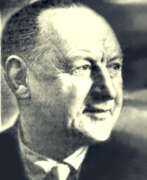Latvia Contemporary art


Janis Avotins is a Latvian artist, born in Riga in 1981. He was educated at the Latvian Academy of Art and the Royal College of Art in London. Avotins works in various media, including painting, drawing and sculpture, and his work is characterised by an experimental approach to form and technique. He has been recognised for his exhibitions in international galleries including Serpentin Galleries in London and the Venice Biennale.


Vija Celmins is a Latvian-American artist. She is best known for her photorealistic paintings and drawings of natural and man-made objects.
Celmins and her family fled Latvia during World War II and eventually settled in the United States. She studied art at the John Herron School of Art in Indianapolis and later at the University of California, Los Angeles.
Celmins began her career as a painter in the 1960s, and by the 1970s she had developed her signature style of photorealism. She is known for her painstaking attention to detail, and her paintings and drawings often take months or even years to complete. Some of her most famous works include images of the night sky, oceans, and rocks.
Celmins has been the subject of numerous solo exhibitions in museums and galleries around the world, including a retrospective at the Centre Pompidou in Paris in 2006. Her work is held in the collections of many major museums, including the Metropolitan Museum of Art in New York, the Museum of Modern Art in New York, and the National Gallery of Art in Washington, D.C.


Arthur Vladimirovich Fonvizin (Russian: Артур Владимирович Фонвизин), a Soviet painter renowned for his mastery in watercolor, was born on January 11, 1883, into a forester's family. From a young age, following a transformative experience at a circus, Fonvizin developed a profound love for drawing. His journey into the art world began with his education at the Moscow School of Painting, where he rubbed shoulders with avant-garde artists and later furthered his studies in Munich among a vibrant community of Russian painters. Fonvizin's early work, influenced by symbolism and the lyrical primitive style, included notable pieces such as "The Bride" (1902) and "Leda" (1904).
Throughout his career, Fonvizin was an active participant in significant art movements and exhibitions, such as the Blue Rose, Jack of Diamonds, and the World of Art movement. His transition to watercolors marked a defining moment in his artistic journey, allowing him to capture the ephemeral beauty of landscapes, portraits, and scenes from pre-revolutionary life with a directness and vibrancy that became his hallmark.
Despite facing challenges, including criticism for formalism and being exiled due to his German heritage, Fonvizin's resilience and dedication to art remained unwavering. His works, celebrated for their lack of preparatory sketches and immediate application of paint, are held in high esteem and featured in prestigious collections like the Tretyakov Gallery and the Pushkin Museum. Among his famous works are "The Circus. Horsewoman" (1936) and portraits of ballerinas from the Bolshoi Theater, showcasing his lifelong fascination with the circus and theater.
For collectors and experts in art and antiques, Fonvizin's oeuvre offers a unique glimpse into the soul of early 20th-century Russian art, marked by its lyrical beauty and emotional depth. To stay updated on sales and auction events related to Arthur Vladimirovich Fonvizin's work, signing up for updates is recommended. This subscription ensures access to the latest information on the availability of his mesmerizing watercolor paintings.


Raimonds Staprans is a Latvian-born American artist and playwright living in San Francisco, California.
He emigrated from Latvia to the United States in the mid-1940s, and studied art at the University of Washington and the University of California, Berkeley.
Staprans is best known for his depictions of ordinary everyday objects, such as paint cans, chairs and cabinets, which are painted in bright colors and set against a monochromatic background. His work balances on the edge between realism and abstraction. Staprans has also gained recognition as a playwright, having written several plays on the theme of "the Soviet occupation of Latvia.




































